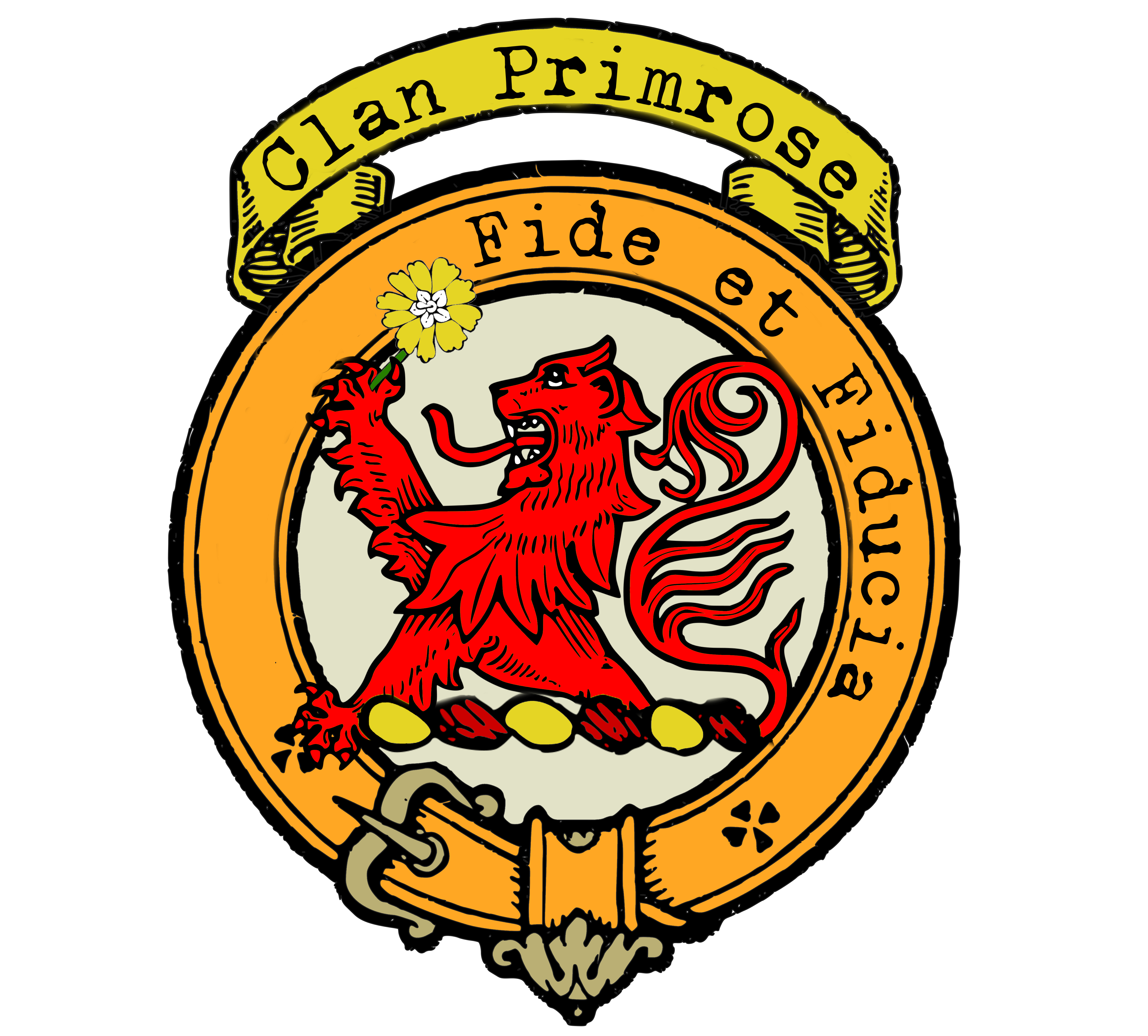Clan Primrose Crest
|
|
CREST: A demi-lion rampant Gules holding in his dexter paw a primrose Or MOTTO: Fide et fiducia TRANSLATION: By faith and trust VARIATIONS: N/A |
| The name Primrose, intriguingly, traces its roots to the lands of Primrose in the parish of Dunfermline. While its exact etymology is debated, some suggest that it originated from the Old British term “prenn rhos,” which translates to “tree of the moor.” This poetic interpretation hints at the clan’s deep connection to the Scottish countryside.
The Primrose family’s roots in Scotland run deep, with early records indicating their presence in Fife, particularly around the Abby of Culross, as early as the fifteenth century. This period in history was marked by significant social and political changes in Scotland, setting the stage for the clan’s rise to prominence. Throughout their history, Clan Primrose produced a lineage of distinguished individuals who left an indelible mark on Scottish society. Among these notable figures were:
The Primrose clan experienced the highs and lows of political fortune. The second Viscount Primrose died without an heir in 1706, leading to a lapse in the clan’s titles. However, Archibald Primrose, born in 1664, played a pivotal role in revitalizing the family’s fortunes. He served in the imperial army in Hungary, opposed James VII’s policies, and was appointed a Gentleman of the Bedchamber during the reign of William and Mary. Archibald’s contributions were rewarded with the creation of the title “Viscount of Rosebery, Lord Primrose and Dalmeny” in 1700. Subsequently, in 1707, he played a key role as a commissioner for the Treaty of Union, a significant event in Scotland’s history. The Primrose clan’s legacy endures through the centuries. Their family seat at Dalmeny, a place of architectural and historical significance, is now open to the public, allowing visitors to step back in time and explore the clan’s heritage. |
|
Citations:
|
|
Purchase @ Redbubble
Purchase @ Amazon.com
Purchase @ Amazon.co.uk

